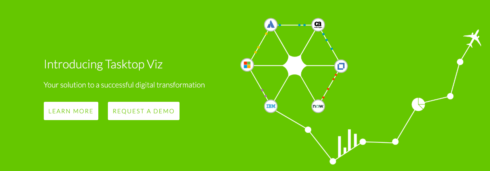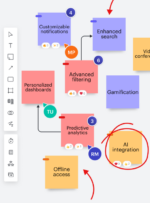
Tasktop announced the general availability of Tasktop Viz, a new value stream management solution designed to provide real-time visibility into software product value streams and obstacles that impede business value delivery.
According to Tasktop CEO Mik Kersten, the main goal was to provide the Flow Framework, which he created to help IT leadership shift from a project-centric mindset to a product-oriented focus. The framework helps leadership realizes more value and respond faster to market changes, and generates flow metrics to large organizations nearly instantly so they can quickly scale. The Flow Metrics include velocity, distribution, time, efficiency, and load.
RELATED CONTENT: Getting the most value out of your value streams
To get those flow metrics, Tasktop Viz crunches the objective data captured from IT’s integrated toolchain – across teams, tools and departments – and generates flow metrics dashboards that pinpoint where work is slowing down and impacting time-to-market.
“If you invest anywhere about the bottom line, chances are you’re wasting your money. You don’t know if you actually need more developers. You might need more designers. You want more DevOps automation,” Kersten told SD Times. “The interesting thing about Tasktop Viz is that it gives you visibility of the full value given your entire portfolio and it shows you what you’ve got technical debt dead ends that make no sense to invest in.”
Kersten added that the new solution was built primarily for large organizations that are fundamental to the economy and to organizations that are going through digital transformations.
Using the steps in the framework to gain an effective value stream, organizations must first refactor their work based on data coming in, define their pipeline before adding a tool, and then finally modeling the value stream before connecting those models to the entire toolchain.
“So by doing this, you actually get a lot of real life flow metrics and you can evaluate whether something that you’re investing in like a shift to cloud, automation, or some staffing changes increases or decreases flow, whether that could produce better results such as happier customers or more revenue or not,” Kersten said.
The average time to get flow metrics showing up in the tool has been 12 days, which quickly drives teams to make data-driven decisions, according to Kersten.
Key benefits of the new solution includes capabilities that:
- Uncovers impediments to speed the end-to-end delivery process and applies targeted automation to measurably increase flow.
- Identifies where to spend innovation and digital transformation budgets to achieve desired business results and provides a measurement framework for tracking progress.
- Creates visibility into IT performance through the business lens — namely by measuring product value stream flow in terms of value realization and strategic objectives.
- Provides a turnkey way of measuring software delivery and the progress of transformations.
“Every single enterprise IT organization can double their flow velocity and therefore double how much they deliver to their customers, and they can cut their flow time in half. That’s how inefficient we’re seeing enterprise value streams have been so far,” Kersten said.






